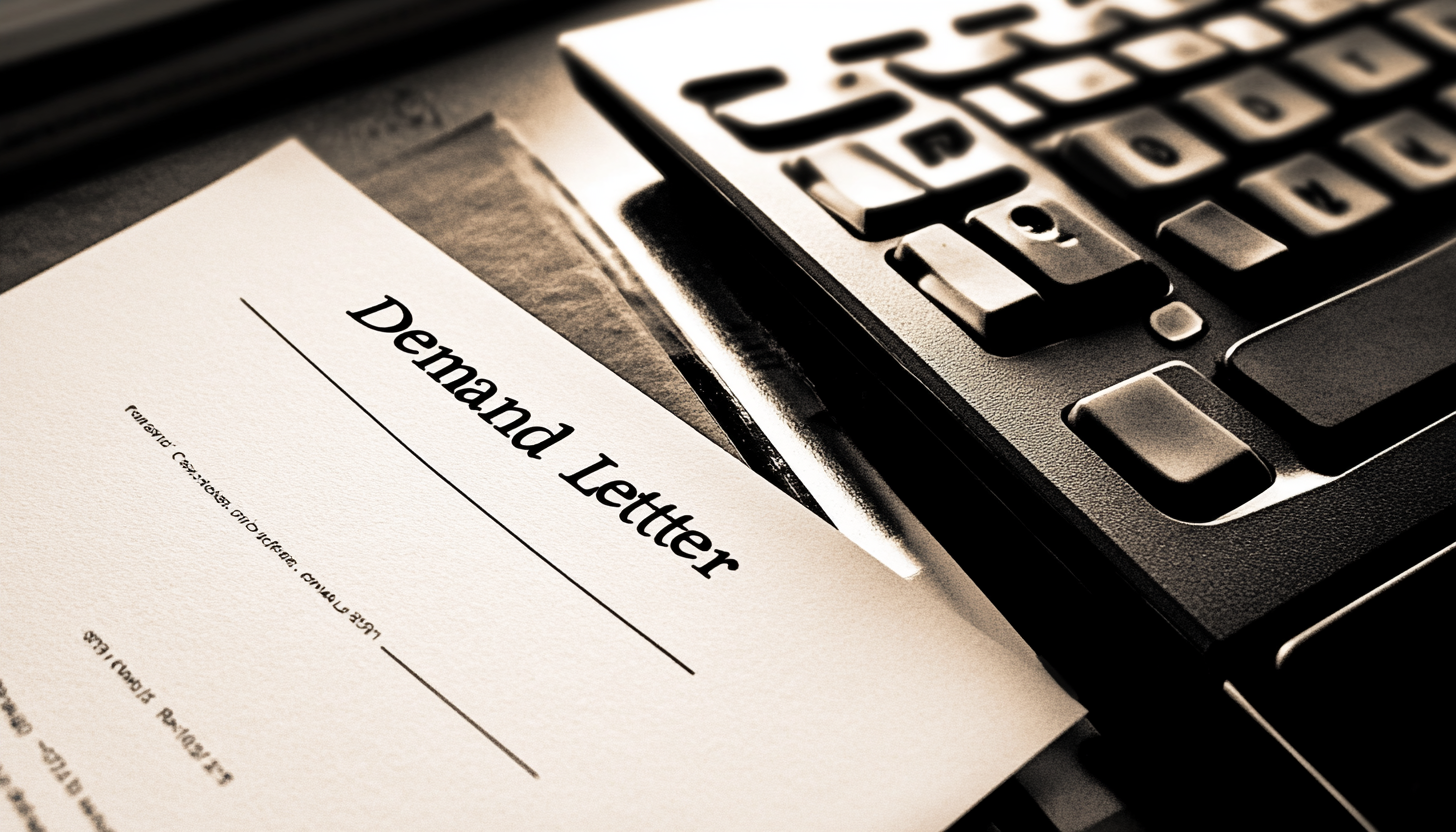How To Respond To A Letter Of Demand

Introduction
A letter of demand is a formal request for payment or action. It is sent by an individual, company, or lawyer to settle an issue. This could range from unpaid debts to breaches of contract. The letter usually states the claim. It gives a deadline and warns of potential legal action if the demand is not met.
A quick, professional reply to a demand letter is crucial. Ignoring it or delaying a response can cause problems. These include court cases or legal penalties. A good response can protect your rights. It can also show your wish to resolve the issue amicably. If the claim is valid, timely communication can help. It can help you negotiate better terms or payment plans.
By addressing the demand letter, you may resolve the dispute. It could prevent more serious legal trouble. A calm reply will help you handle the situation with confidence. Do this whether you agree with the demand or wish to contest it. At Response Simple, we make it easy to draft a personalized letter. It will help protect your interests and settle disputes quickly.
Understand The Letter Of Demand
A letter of demand has several key parts. First is the claim. It outlines what is owed or what action is required. Next is the timeline. It sets a deadline to respond or resolve the issue. Finally, there is the "fix". It warns of possible legal consequences if the issue isn't fixed. These elements are to urge quick action.
It’s crucial to thoroughly read and understand every part of the letter. If you are feeling lost, we help you to read and understand your letter.
The letter must explain the fix and reason for the letter. It could be unpaid debts, contract breaches, or other legal issues. The timeline sets a deadline to respond. Missing it may cause serious legal action, like a lawsuit.
A common mistake is to ignore the letter. Or, people respond emotionally. They do so without understanding the legal implications. Other people act without all the facts. This can weaken their position. Before taking any steps, review the letter. Understand the situation you are being asked to fix.
Taking time to assess the situation can help you respond better. It may also avoid further legal complications.
Assess Your Position
Before responding to a letter of demand, decide how you feel. It will let you respond confidently and avoid legal issues.
Then, determine if the claim is valid. Start by reviewing the demand details. Compare them with your records. Gather all related documents. Contracts, invoices, receipts, and emails that help your case. These will show if the demand is justified or if there is a misunderstanding.
If the claim is valid, like an unpaid debt, try to settle it. Suggest a payment plan or some other option. If you think the claim is wrong, use documents to support your case when you dispute it.
We can help you draft a professional letter. You are disputing, agreeing to, or seeking more info on the claim.
Decide How To Respond
Once you’ve assessed your position, it’s time to decide how to respond to the letter of demand. Your response will depend on if you agree, dispute, or need more info.
If you agree with the demand, it’s best to respond quickly. If you can't do what the letter asks, try to negotiate a payment plan or a deal. A professional, cooperative tone can help you fix this. It may prevent it from escalating further.
If you dispute the demand, explain, clearly, why you disagree. Be sure to include any supporting documents. These include contracts and receipts that back up your view. A respectful but firm tone is key. It shows you will address the issue but stand by your rights.
In some cases, the demand may be unclear or incomplete. If this happens, request further information. Politely ask the sender for clarification or for more docs. You need to fully understand the claim before acting.
How To Structure Your Response
Aim for your reply to be professional and clear. A good response can often stop the situation from going any further. This shows your will to solve the issue. It also strengthens your position.
Introduction: Start by saying you received the letter. This shows good faith and a proactive approach. State your intent to address the matter. Do you agree, dispute, or need clarification?
Your Position: Clearly outline your stance. If you agree, please confirm and suggest any terms, like a payment plan. If you dispute the claim, explain why. Reference any relevant facts or documents. If the demand is unclear, ask for more info.
Supporting Documents: If you have any evidence add them to your letter. Please include contracts, receipts, or emails with your reply. This will bolster your argument and clarify your view.
Be polite and professional, even when disputing a claim. Aggressive or emotional response can make things worse. Staying calm and respectful shows you want to resolve the issue.
A strong, professional response will help your case and create a resolution.
How We Help You Respond
When replying to a letter of demand, a clear, professional response is vital. That’s where Response Simple comes in. Our platform lets you quickly draft a custom response letter. It avoids high legal fees and long delays.
We save you time by guiding you through the process step by step. Just answer a few questions about your situation. Our website will then create a letter. It will be polished and professional, fitting your needs. Our system will ensure your letter is clear, legally sound, and ready to send. It will help you, whether you agree with the demand, dispute it, or need more info.
Our service can save you the stress of writing a legal letter from scratch. You won't have to worry about saying the wrong thing. It's much cheaper than hiring a lawyer. It can save you hundreds, even thousands, in legal fees.
Don’t let a letter of demand overwhelm you. Take control. Use us to help you craft your response.
What To Avoid
When dealing with a letter of demand, there are some common pitfalls to avoid. First, never ignore the letter. Not responding on time may have legal consequences, like a lawsuit or extra fees. Even if you’re unsure how to proceed, responding to the letter is a critical first step.
Don’t delay. The deadline in the letter is important. Missing it can allow the other party to take legal action. A quick response can prevent future problems.
Conclusion
You must respond to a letter of demand. It is key to protecting your rights and avoiding issues. Ignoring it or acting aggressively can make things worse. Taking time to respond can help resolve the issue. This is true whether you agree, dispute, or want info. It can be done on your terms.
If you handle it with care, you'll likely avoid future legal stress.
If drafting a professional response feels hard, we can help. Our platform is easy to use. It guides you to create a well-structured, legal letter. It will save you time, money, and stress.
Don’t let a letter of demand create unnecessary anxiety. Ready to respond to your demand letter? Let us guide you at every step. We will ensure your response is clear, professional, and effective. Get started today.
Next Blog Post:
Previous Blog Post:
